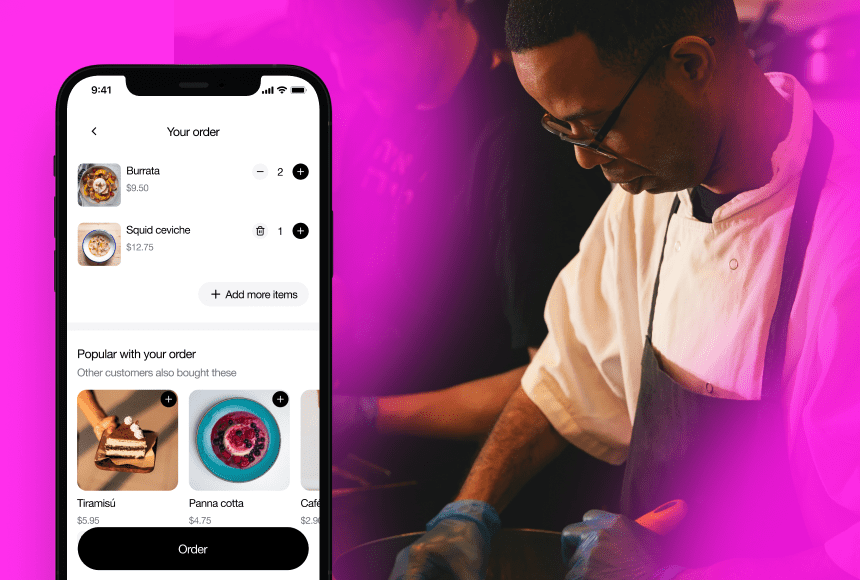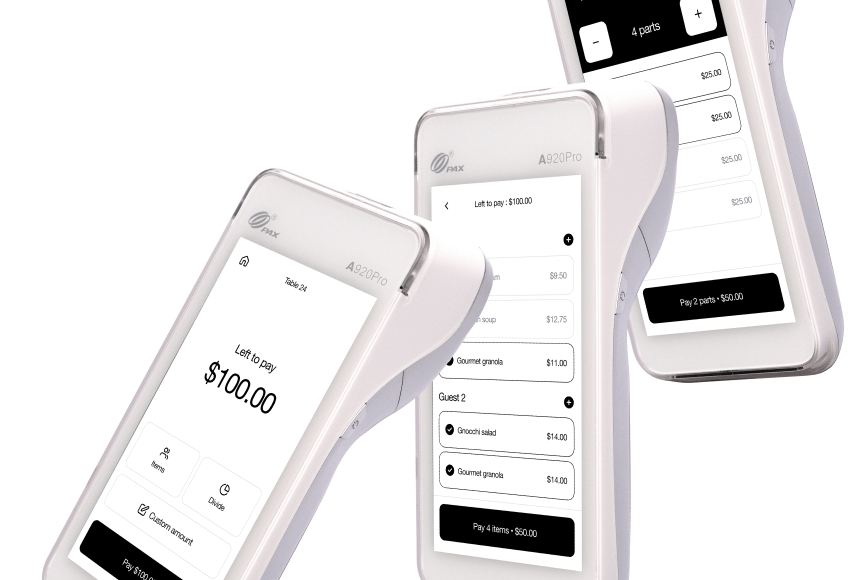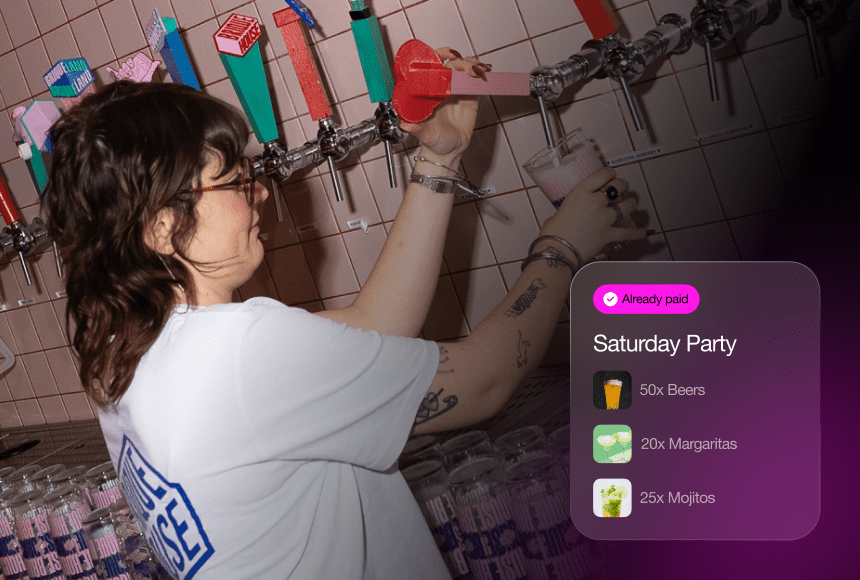
Making Mealtime Smoother: How QR Menus Transform the Family Dining Experience
Why Technology Can Actually Unite Families at the Table
There’s a common fear among restaurant owners that phone usage at the dinner table will rob families of quality time. At first glance, you might envision little ones glued to screens, ignoring the conversation while parents scramble to keep the peace. But what if technology could actually bring families closer together? That’s where QR ordering enters the picture—turning what might seem like a disruptive gadget into a powerful assistant that helps parents focus on their kids instead of wrestling with complex paper menus or waiting for a server to walk by.
In a world where digital devices have become part of nearly everyone’s routine—children included—restaurants are uniquely positioned to harness this technology for a better, more coordinated dining experience. According to the National Restaurant Association’s 2023 State of the Restaurant Industry, over 76% of operators say technology is essential for streamlining operations and satisfying guests. And families are no exception. With the right approach, QR ordering frees up time for genuine family bonding at the table instead of letting technology take center stage.
Debunking the Myths About Kids and QR Ordering
Some restaurant owners worry that implementing a QR-based solution will complicate service for families. But consider the following myths:
- Myth #1: “Kids will hog their parents’ phones.”
- Myth #2: “Parents might feel the restaurant is forcing them to use technology.”
- Myth #3: “Adults and children prefer paper menus anyway.”
While each concern has a kernel of truth, technology can be integrated in a meaningful and family-friendly way. With QR ordering, parents hold the reins, controlling what’s displayed and when to finalize orders. That means children can feel involved—perhaps guiding the selection of their own meal—yet don’t have unrestricted screen time. And if someone at the table prefers a physical menu, you can still offer that option. The key is flexibility, allowing families to adapt the QR ordering system to their own preferences. In the end, the tech is there to serve them, not the other way around.
How QR Menus and Ordering Solve Common Family Dining Woes
Let’s face it: anyone who has hosted a family with young kids knows how quickly chaos can erupt—slow service, misplaced orders, or complicated billing are just a few triggers. Here’s how a QR solution can make life easier for everyone:
1. Speedy Service for Wiggly Kids
Children often have shorter attention spans, and a rapid ordering process helps. With a simple QR scan, the meal selection can happen immediately, cutting down the time it takes for a server to arrive. This lets parents order a quick snack or a side dish to keep restless kids occupied until the main course arrives.
2. Encouraging Positive Family Interactions
Rather than burying their noses in phones, families can use a single device to discuss menu options together. It’s akin to passing around one big, interactive board. Parents can point out pictures or menu highlights, explaining the dish in real time, possibly even letting older kids tap the screen to confirm their choices. Done right, it sparks conversation and fosters collaboration.
3. Eliminating Potential Errors
Accidentally ordering an extra side of fries might be a mild inconvenience, but for families with dietary restrictions or picky eaters, a wrong order can derail the entire meal. A QR-based menu helps reduce human error—the specifics of each dish or customization are displayed as options. So if the child’s meal requires no onions, that requirement is entered precisely, minimizing confusion in the kitchen.
4. Adaptive, On-the-Fly Reordering
Kids are unpredictable. Maybe they decide they want an extra scoop of ice cream at the last minute, or parental meltdown prevention calls for a second round of fries. In traditional systems, waiting for a server to swing by can feel like ages. With QR ordering, parents can add to the order in just a few clicks. This flexibility can turn an ordinary meal into a more relaxed experience for everyone.
Statistics Highlighting the Need for QR Solutions in Family Dining
Family dining represents a significant portion of the restaurant industry’s revenue, particularly in the casual and fast-casual segments. A few notable data points underline why technology solutions like QR ordering are not just trendy but necessary:
- Frequent Outings: A large share of U.S. families dine out at least once a week. While pre-pandemic figures from some industry surveys hovered around 60%, predictions suggest families may dine out even more often now, largely due to convenience.
- Tech Familiarity: A recent survey found that 70% of parents with kids under age 10 are open to at-table digital solutions if it can expedite the ordering or payment process.
- Child Influence: Studies show that around 40% of families let children help decide on the menu. Giving kids a say often translates into more satisfaction all around.
As these numbers suggest, families appreciate quick, accessible tools that make dining out hassle-free. QR ordering fits neatly into that framework, meeting modern expectations and smoothing potential bumps.
Peek Inside a Family-Friendly QR Experience
Picture this scenario: The Millers walk into your restaurant—two parents, a chatty 10-year-old, a mischievous 6-year-old, and a baby in a high chair. They’re greeted with a warm hello, and right on the table is a QR code that leads to your menu. Here’s a snapshot of what happens next:
- Parents scan the code: They see the menu broken down into categories—appetizers, kids’ meals, main courses, desserts, and drinks.
- Kids get a peek: The 10-year-old is excited to discover the kids’ burgers come with a funny name and a cute photo on the digital menu. The 6-year-old points to a mac-and-cheese dish with an eye-catching icon. Both begin stating their preferences.
- Quick add-ons: Mom needs a gluten-free option, Dad wants extra jalapeños, and the kids want to split an order of fries. All these requests are seamlessly added with a few taps.
- Instant order confirmation: The family sees exactly what’s on their tab—no confusion, no missed modifications, no waiting for a server to clarify. It’s a breeze.
- Minimal wait: Because the kitchen gets the order immediately, partially thanks to the integrated POS system, the kids receive their sides faster, reducing fidgety moments.
- Simple payment: The meal wraps up, and instead of waving for the bill, the parents pay using the same QR code. They can leave a tip and even post a quick review if they want, all in one go.
Suddenly, you’ve minimized the biggest friction points. And in the process, you’ve turned a potentially chaotic dinner into a well-orchestrated, comfortable family outing.
How a QR Ordering System Impacts Your Bottom Line
Beyond offering convenience, any restaurant owner wants to know how implementing QR ordering can affect revenue and profitability. Here are the key angles:
- Higher Check Averages: Digital menus often prompt guests—parents included—to explore add-ons, premium dishes, or upsell suggestions highlighted on-screen. With children in tow, an extra dessert or side might be an easy upsell. Over time, that incrementally boosts average ticket size.
- Fewer Order Errors: Mistakes eat into profits. When families are forced to reorder items, kitchens use additional ingredients, and servers spend extra time rectifying the problem. QR ordering helps ensure clarity. Each modification is digitally recorded, slashing the odds of losing money to incorrect dishes.
- Efficiency Gains: Quick ordering translates to higher table turnover in busy periods. Families who might otherwise linger waiting for separate checks can exit more promptly when they can pay the moment they’re ready. That means more satisfied guests overall, especially on weekends or high-traffic evenings.
- Enhanced Customer Loyalty: Word gets around when your restaurant is perceived as family-friendly. Families expect modern solutions, and they’re more likely to become repeat customers if they enjoy a hassle-free experience. The payoff includes a loyal clientele and consistent revenue streams.
Overcoming the Learning Curve: Making QR Ordering Easy for All Ages
Installing a new system can seem daunting. The good news is that most of your guests—kids included—are already used to technology. Yet, you’ll want to ensure that older guests or less tech-savvy individuals aren’t left behind. Here’s how to keep it inclusive:
Offer Both Digital and Paper Menus
Some loyal patrons may still gravitate toward physical menus. Others might have limited smartphone access. Having a few paper menus available is a simple courtesy that goes a long way. This dual-mode approach also encourages families to try the QR without feeling forced.
Clear Instructions on the Table
A quick, illustrated guide can eliminate confusion. Show exactly how to scan the code, select dishes, and confirm the order. Keep it short and visual. If you do it right, even a 6-year-old might tap their way to ordering. Simplicity is key.
Train Your Staff to Guide Families
Empower your servers or hosts to become coaches. They can teach newcomers, especially families with small kids, to place orders. Sometimes a two-minute explanation is all it takes to remove the intimidation factor. Your staff can highlight child-friendly features, like pictures of the kids’ meals or fun icons that prompt interactive experiences.
Empower Families to Feel Confident
Emphasize that the QR code adds flexibility, not complexity. If a family finds something confusing, staff should be readily available to step in. When parents feel supported, they’ll see the QR code as a tool, not a barrier.
Spotlight on Reliability: Ensuring Your System Is Always Up to Speed
Nothing ruins a high-tech solution quite like technical hiccups. If families feel stressed because the QR code refuses to load, you’re back to square one. Focus on:
- Stable Internet: Ensure you have enough bandwidth for all tables to scan and order simultaneously. Sluggish connections create a negative impression fast.
- Mobile Responsiveness: Some kids might use tablets, while grown-ups use different smartphones. Your digital menu should display properly across devices.
- Regular Testing: Periodically scan your own QR codes to confirm everything’s working. A glitch-free system shows your commitment to efficiency.
- POS Integration: The best QR solutions sync seamlessly with your point-of-sale terminal. That ongoing alignment keeps data organized and prevents kitchen confusion.
Why Families Appreciate Quick Payment Options
If there’s one moment in family dining when parents truly don’t want to wait, it’s the payment stage. Kids might already be restless, maybe the baby is due for a nap, or grandma needs to get back home. QR-based payment offers a near-instant checkout process, meaning families can settle up the minute they decide they’re ready to leave.
This not only speeds up turnover but leaves guests with a positive memory of their visit. Payment friction is often the last impression a customer has of your establishment—ensuring it’s smooth and stress-free goes a long way in persuading them to come back.
Solutions like sunday stand out for their simplicity here. Guests scan, tip if they wish, and confirm payment in seconds. Although you want to keep the experience subtle, the time saved adds up, especially during weekend brunch rushes when multiple families are in the queue.
The “Extra Fries, Extra Fun” Effect: A Quick Walk-Through
Let’s revisit the Millers to illustrate a scenario where a second round of fries becomes a no-brainer:
- Kids polish off their sides: The 6-year-old still wants more fries. Dad quickly checks the phone, sees the order from earlier, taps “reorder fries.”
- Order arrives promptly: The request shoots straight to the kitchen. Parents don’t have to flag down a busy server. Less downtime means fewer toddler meltdowns.
- Parents can still chat: Because the reordering was instant, the adults pick up right where they left off—maybe discussing weekend plans rather than anxiously gawking for staff.
- Enhanced guest experience: Everyone leaves happy and well-fed. No fuss, no confusion, and they’re already thinking about their next visit.
In a traditional setting, this mini-moment might have involved waiting, searching for staff, or reintroducing the order. With QR ordering, it’s friction-free. Multiply that scenario across numerous families, and it becomes a significant difference in overall guest satisfaction.
Train Your Team for a Family-Centric Connection
Technology alone isn’t a magic wand; your staff’s approach matters too. Empower your team members to make families feel welcome and supported in using QR ordering. Encourage them to ask a few specific questions:
- “Have you tried scanning our menu yet?”
- “Would you like a quick rundown of how it works?”
- “Do your kids want to help pick something out?”
Even a simple greeting that acknowledges families can reshape the entire experience. Warmly guiding parents and kids through the technology fosters trust and encourages them to return. The digital approach complements the personal touch of your servers rather than replacing it.
A Quick Comparison: Traditional vs. QR-Driven Family Dining
| Traditional Experience | QR-Driven Experience | |
|---|---|---|
| Menu Access | Paper menus, potential for missing kids’ sections | Instant digital menu with clear kids’ category |
| Order Process | Wait for staff, possible miscommunication | Scan, tap, confirm—parents in control |
| Changes/Extras | Request server’s attention, unpredictable wait | Real-time requests, minimal downtime |
| Payment | Flag down server, wait for check, wait for card return | Pay on phone instantly, tip included |
| Overall Vibe | Possible delays, kids get restless | Efficient, flexible, overall calmer |
When your restaurant adopts QR ordering, you move from the potential chaos and guesswork of a traditional system to a more streamlined, guest-centric environment. Families especially appreciate the immediate control over their dining experience.
Practical Steps to Implement QR Ordering
So you’ve decided to explore a QR ordering system. Where do you start? Here’s a quick roadmap:
- Research Reliable Providers: Look for solutions that integrate with your existing point-of-sale terminal. Identify essential features like user-friendly design, quick updates, and analytics.
- Create Clear Menu Layouts: Build a digital menu that’s visually appealing and easy to navigate. Segment items into categories—like kids’ meals, vegetarian options, and dessert. Include mouthwatering photos if possible.
- Brand Your QR Codes: Keep your restaurant’s aesthetic in mind. Place the codes on table tents or coasters with recognizable branding. Make them simple to scan by choosing an optimal size and ensuring they’re not obstructed.
- Staff Training: Allocate time to train servers, hosts, and even kitchen staff on how the QR system works. Emphasize how it helps them serve families more efficiently.
- Roll It Out Gradually: Start with a small group of tables or certain sections. Gather feedback from families and note any recurring issues. Iterations are part of the process.
- Promote the Benefits: Use signs or gentle mentions in your marketing: “Scan to order—fast, fun, and family-friendly!” Don’t push too hard; simply highlight the convenience.
When (and How) to Subtly Promote sunday
You might already know of solutions like sunday that provide swift QR ordering, tipping, and even a direct way for customers to leave a Google review. The best approach is to share the advantages clearly and organically—most parents won’t need a hard sell if they see immediate benefits.
- No More Confusing Receipts: Everything is itemized on the digital bill, so parents see precisely what they’re paying for.
- Secure and Instant Payment: Because it’s integrated with a trusted payment terminal, families feel confident about data security.
- Opportunity for Feedback: The ease of leaving a review right after a great meal encourages families to share positive experiences. Word-of-mouth travels fast, especially among parents.
Keeping it subtle means weaving these points into casual conversation or signage, showing you value their time and want them to have a stress-free visit.
Time to Serve Up a Better Family Experience
Revamping your restaurant to accommodate families often feels like a hefty project. But QR ordering is one of those upgrades that checks multiple boxes: it speeds up service, keeps kids calm, assures parents, and turns what could be a chaotic outing into a memory worth repeating. By adopting a solution that blends seamlessly with traditional hospitality, you’ll strike the sweet spot between modern convenience and genuine human interaction.
Frequently Asked Questions (FAQ)
1. Will QR ordering isolate kids on devices the entire meal?
Not necessarily. QR ordering can be a shared activity—parents and kids look at the menu together. Most children’s involvement ends once they’ve helped select their meal. If you set it up so only one device is used, families continue interacting face-to-face.
2. What if older guests find QR codes intimidating?
Keep a small stack of paper menus on hand. Train your staff to provide quick guidance, showing how easy scanning can be. Over time, even less tech-savvy guests may appreciate the convenience once they give it a try.
3. How does the kitchen handle special requests or allergy notes?
A well-designed QR menu includes clearly labeled options and customization fields. These notes go straight to the kitchen. It reduces confusion around special requests, ensuring accurate dishes for children or adults with allergies.
4. Are parents hesitant to pay through a digital link at the table?
Today’s diners often trust secure payment systems integrated into recognized providers. Highlight the safety measures, and most families will see it as a perk—especially when they can pay and exit if their little one is getting restless.
5. Won’t the service become less personal if everything is digital?
On the contrary, staff can dedicate more time to genuine hospitality (greeting families, chatting briefly, handling any unique concerns). Instead of rushing to input orders, they focus on creating a friendly, welcoming environment.
Implementing QR ordering may sound like a rookie move to some, but in reality, it can be the secret ingredient that helps your restaurant thrive in the competitive family dining market. It’s more than just a digital novelty; it’s a proven way to streamline service and adapt to modern dining habits. Embrace it wholeheartedly, and watch as your tables fill with happy families who enjoy both a hearty meal and a taste of hassle-free technology.
Find out more today
Drop us your details below and we’ll reach out within the next 24h



